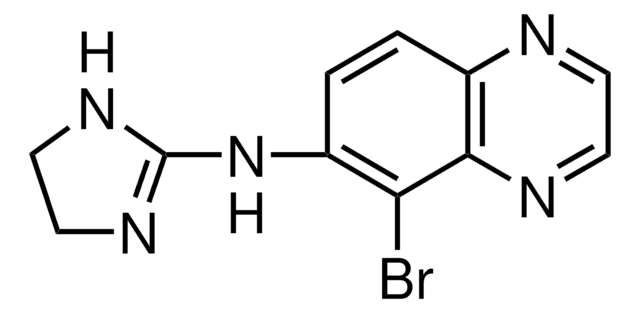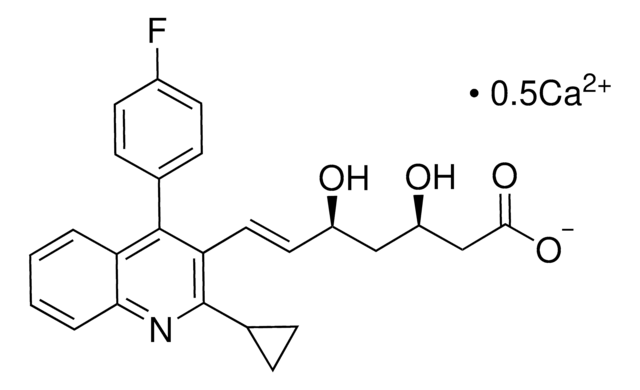T6394
Timolol maleate salt
≥98% (TLC), powder
Synonym(s):
S-(−)-1-(t-Butylamino)-3-[(4-morpholino-1,2,5-thiadiazol-3-yl)oxy]-2-propanol maleate salt, Timolol hydrogen maleate
About This Item
Recommended Products
Assay
≥98% (TLC)
form
powder
optical activity
[α]25/D -5.4°, c = 4.9 in 1 M HCl(lit.)
color
white to off-white
mp
202-203 °C (lit.)
solubility
H2O: soluble
ethanol: soluble
ε (extinction coefficient)
8,700 at 294 nm at 1 M
originator
Merck & Co., Inc., Kenilworth, NJ, U.S.
SMILES string
[H]\C(=C(/[H])C(O)=O)C(O)=O.CC(C)(C)NC[C@H](O)COc1nsnc1N2CCOCC2
InChI
1S/C13H24N4O3S.C4H4O4/c1-13(2,3)14-8-10(18)9-20-12-11(15-21-16-12)17-4-6-19-7-5-17;5-3(6)1-2-4(7)8/h10,14,18H,4-9H2,1-3H3;1-2H,(H,5,6)(H,7,8)/b;2-1-/t10-;/m0./s1
InChI key
WLRMANUAADYWEA-NWASOUNVSA-N
Gene Information
human ... ADRB1(153) , ADRB2(154) , ADRB3(155)
Looking for similar products? Visit Product Comparison Guide
Application
Biochem/physiol Actions
Features and Benefits
Preparation Note
Signal Word
Warning
Hazard Statements
Precautionary Statements
Hazard Classifications
Acute Tox. 4 Oral - Repr. 2
Storage Class Code
11 - Combustible Solids
WGK
WGK 3
Personal Protective Equipment
Certificates of Analysis (COA)
Search for Certificates of Analysis (COA) by entering the products Lot/Batch Number. Lot and Batch Numbers can be found on a product’s label following the words ‘Lot’ or ‘Batch’.
Already Own This Product?
Find documentation for the products that you have recently purchased in the Document Library.
Customers Also Viewed
Our team of scientists has experience in all areas of research including Life Science, Material Science, Chemical Synthesis, Chromatography, Analytical and many others.
Contact Technical Service


















